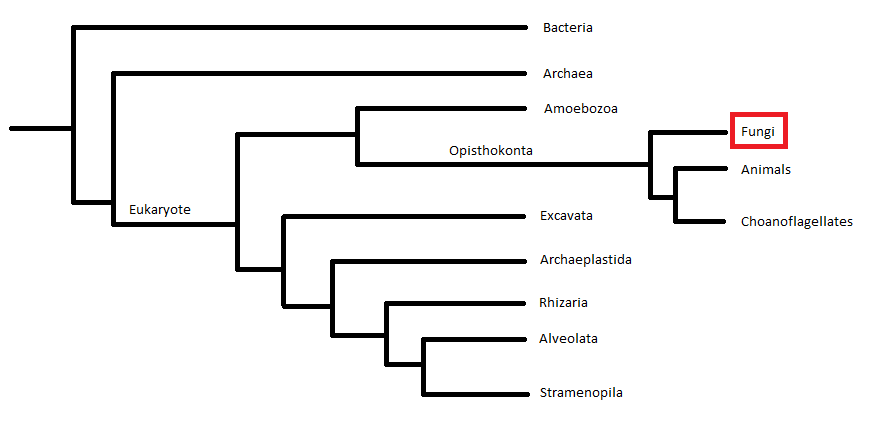
Classification
Glomus intraradices recently underwent a name change to Rhizophagus intraradices. Most of the information still applies to the first name of Glomus intraradices so that is what we explain below. We also explain why this species was thought to belong to each group.
Domain: Eukaryote
Group defined by being a unicellular or multicellular organism with a nucleous that is membrane-bound.
Major Clade: Opishtokonta
All members of this group had an ancestor that had one posterior flagellum.
Kingdom: Fungi
This group is described as having a cell wall that is made out of chitin unlike the cell walls made of cellulose in plants. The phylogenic tree below shows the relationships of the kingdom of fungi to other well-known kingdoms, super groups, and domains.
Phylum: Glomeromycota
Approximately 230 speices, all described as forming arbuscular mycorrhizas with the roots of land plants.
Class: Glomeromycetes
Sub catergory of Glomeromycota.
Order: Glomerales
All fungi in this group are biotrophic mutualists with mainly plants. As seen in the following phylogenic tree, the relationship of the glomeromycetes is unclear as to which group diverged first. We can see however, which groups of fungi are sister to the Glomerales by molecular data (Hibbett et al. 2007)
Family: Glomeraceae
Sub catergory of Glomerales
Genus: Glomus
Largest group of arbuscular mycorrhizal fungi. Includes approximately 85 species
Species: Glomus intraradices
Species name which means "a small globular body within the roots" in latin. Glomus means "a small globular body", intra means "within", and radices means "roots" (Google Translate 2013).

